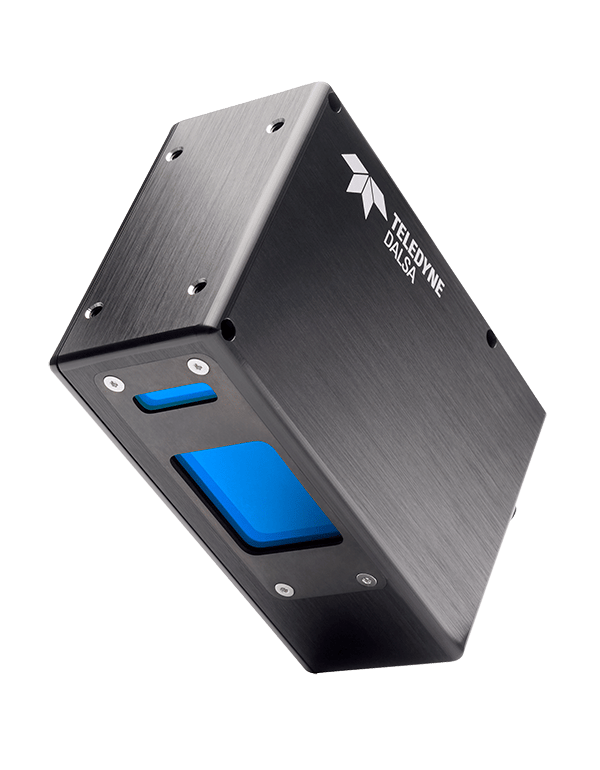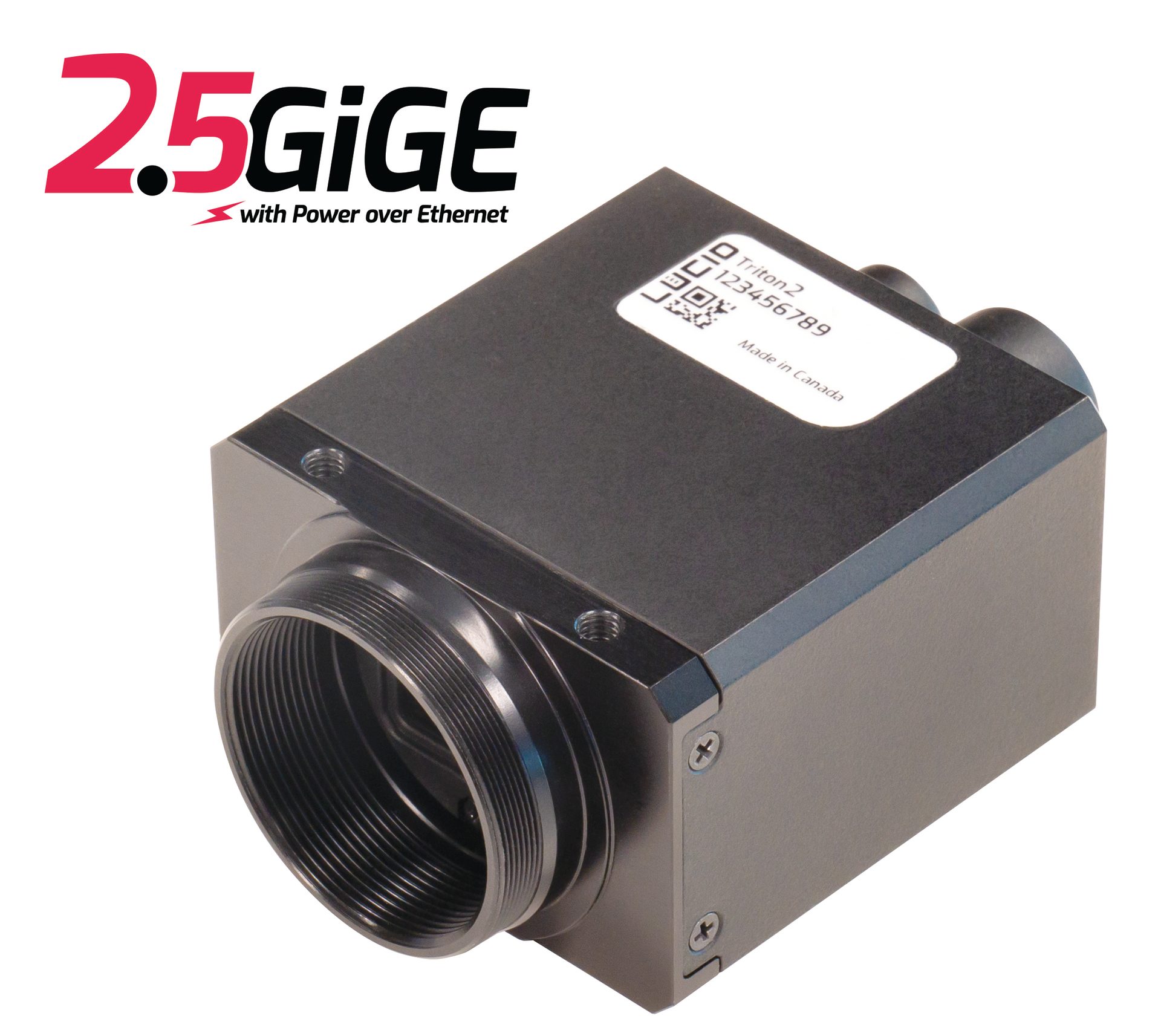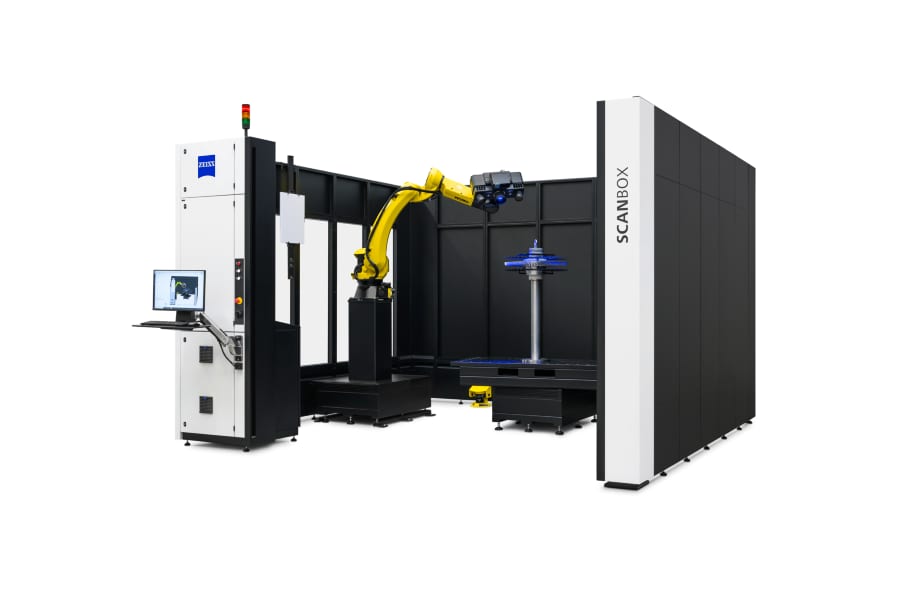Products
the latest products to help you improve your manufacturing process
UniWest ECS-4 Handheld Rotating Bolt Hole Scanner
The new ECS-4 scanner is very lightweight (7 oz) and has an ergonomic form-factor with the probe exiting at a right-angle from the scanner. In addition, the ECS-4 boasts variable speed (125 – 2,250 RPM) and increased torque over UniWest’s popular ECS-1 scanner. Three buttons are within easy reach of the user’s thumb: Null, Erase and On/Off.

The ESC-4 scanner utilizes a rotary transformer to couple eddy current signals from the probe to the instrument. Compatible instruments include the UniWest EVi, EddyView® II, EddyView® Pro and EddyView® Premium. In addition, the ECS-4 will operate on the NORTEC® 600 and NORTEC® 2000. The ECS-4 probe connector is a 4-pin Fischer connector with O-rings. Compatible probes include the following UniWest probe styles: URB, URBA, US-5000, SSB probes; as well as some competitor’s probes.
UniWest
www.uniwest.com/ecs-4
FRAMOS FSM-IMX570 DevKit
FRAMOS announced the launch of a new development kit for vision system engineers who are working to develop Time-of-Flight devices for industrial and robotics applications.
The FSM-IMX570 Devkit provides vision system engineers with a simple, coherent framework for quickly developing a working prototype of an embedded indirect Time-of-Flight (iToF) embedded vision system based on Sony’s leading iToF technology. The development kit is built around Sony’s IMX570 iToF image sensor, and includes the necessary hardware modules, software drivers, and documentation to allow engineers to integrate the system with widely-used platforms like NVIDIA’s® Jetson™ embedded computers and create a working camera prototype within a few hours.

Time-of-Flight, or ToF devices use pulses of infrared laser light to illuminate the subject and measure the time it takes for the reflected light to reach the image sensor to determine depth information. Indirect Time-of-Flight, or iToF cameras are a variation of ToF cameras. While ToF cameras directly measure the time it takes for the emitted light to be reflected back to the camera, indirect ToF cameras send out continuously modulated pulses of light, and then measure the phase shift of the reflected light to calculate the distance to an object.
Because of their ability to sense depth and distance accurately, ToF cameras are used in a variety of machine vision and embedded systems applications. These include applications like industrial robotics, where ToF cameras can be used instead of LiDAR to help robots navigate autonomously. Other applications of ToF cameras include logistics, where they are used to allow automated forklifts to accurately pick up pallets and package sorting, where ToF cameras can quickly sense and sort package dimensions.
ToF cameras are also finding their way into the mobility and transport sectors, where they are used for attention tracking and gesture recognition, and in retail automation, where they are used for people counting and seamless checkout systems.
FRAMOS’s FSM-IMX570 Devkit has been developed to address some of the difficulties vision system engineers face when developing camera systems with emerging technologies. These include the fact that creating a working camera requires integrating multiple components that aren’t always easy to interface to accessible platforms for processing and calibrating the raw data from the sensor. Since ToF is an emerging technology, there isn’t a lot of documentation available for some components, and what little there is is often proprietary.
The development kit allows engineers to get a working device system up and running quickly. It allows them to visualize depth data as false color video, or as a 3D point cloud stream. Besides the preprocessed and corrected depth data, the FSM-IMX570 Devkit also allows users access to the raw pixel data from the image sensor, for the purpose of development and benchmark with own processing pipelines.
FRAMOS can customize all elements of the development kit, pouring it into the perfect fit for performance and producibility. Starting from the form, size and layout of the printed circuit boards, over driver porting and tuning, to adaption of the whole optics and illumination system for the specific application and operating distances. The goal is to provide a complete solution from one hand, relieving customers from the duties and risks managing technology and supply chain quality when moving into volume.
The FSM-IMX570 Devkit includes a FRAMOS sensor module board, with the Sony IMX570 sensor; a laser illumination board; a sensor adaptor board, to provide synchronization with the laser illumination and on-board depth processing, and a FRAMOS processor board adapter, to provide connectivity to the NVIDIA Jetson family of embedded computers, including the Jetson Xavier™ and Jetson Orin™ platforms.
FRAMOS
https://www.framos.com/en/products/fsm-imx570-development-kit-for-jetson-agx-orin-xavier-26926
Teledyne 4K 3D Laser Line Profile Sensor
Teledyne DALSA introduced the Z-Trak™ LP2C 3D profile sensor family for in-line 3D measurement and inspection applications. As the latest member of the Z-Trak family, the LP2C 4K sensors deliver 4,096 samples per profile and an x resolution down to 3.5 microns, allowing customers to measure and inspect parts with tighter tolerances, and to identify smaller defects cost effectively.
Ready to use straight out of the box, Teledyne’s Z-Trak LP2C 4K sensors are factory calibrated and combine high scanning speeds with easy-to-use software tools, delivering highly repeatable and accurate height, width, and length measurements. With its compact size and simplified cabling, Z-Trak LP2C is ideal for applications in battery, automotive, factory automation, robotics, and logistics markets.

Z-Trak models are available for measurement ranges of up to 650mm and have a horizontal field-of-view of up to 1200mm. The LP2C 4K series can also handle a wide variety of surface and material types with its red and blue eye-safe lasers.
Z-Trak LP2C features in-line processing capabilities to improve and enhance the profiles. In addition, it can generate additional metadata that up-stream algorithms can use to eliminate un-wanted reflections. Cleaner 3D scans help applications to produce more accurate and dependable results.
Teledyne DALSA
www.teledynedalsa.com/imaging
LUCID Triton2 2.5GigE Camera
LUCID Vision Labs, Inc. announced the launch of its new Triton2 camera family featuring a 2.5GigE interface and the latest Sony Pregius S sensors.
The new Triton2 camera leverages LUCID’s trusted Factory Tough™ industrial platform to offer unprecedented performance in a cost-effective, compact, and uncompromised camera design. The adoption of the 2.5GigE (300 MB/s) interface enables higher bandwidth than 1GigE cameras without compromising on size, thermal management, or Power over Ethernet (PoE) support.

Triton2 utilizes the latest Sony Pregius S global shutter CMOS image sensors ranging from 5.0 MP to 24.5 MP. The 2.5 GigE bandwidth can reach typical industry benchmarks, such as 5.0 MP resolution with over 50 fps, in a cost-effective and compact 44 x 29 x 45.3 mm camera design, which up until now were reserved for USB 3.0 cameras. The first Triton2 models in production include the 5.0 MP Sony IMX547, 12.3 MP IMX545 and 24.5 MP IMX540 CMOS image sensors. Additional models will be released this year.
The 2.5GBASE-T Triton2 is a GigE Vision and GenICam compliant camera capable of 300 MB per second data transfer rates and allows the use of standard CAT5e and CAT6 cables up to 100 meters. Triton2 features Power over Ethernet (PoE) that simplifies integration and reduces cost.
All LUCID cameras conform to the GigE Vision 2.0 and GenICam3 standards and are supported by LUCID’s own Arena software development kit. The Arena SDK provides customers with easy access to the latest industry standards and software technology. The SDK supports Windows, Linux 64bit and Linux ARM operating systems, and C, C++, C# and Python programming languages.
LUCID Vision Labs, Inc.
https://thinklucid.com/triton2-gige-machine-vision/

CAPTURE 3D Modular ZEISS ScanBox Series 5
CAPTURE 3D, a ZEISS company and provider of innovative 3D digitizing solutions in the U.S., announced the ZEISS ScanBox Series 5 — the latest addition to its collection of automated 3D scanning and inspection solutions designed and developed for industrial environments. The new series replaces the former proven and successful ScanBox Series 5 models with further enhanced optical 3D measuring machines featuring a modular concept designed to meet the demands of modern production, such as a new faster robot module for increased scanning speed, an integrated control tower for greater efficiency, a rotation table with a load capacity of up to two tons, and modular components for an adaptable floorplan layout.
Developing a reliable automation strategy continues to be a critical success factor for modern manufacturers to meet the demands of the changing landscape while improving quality control and dimensional inspection, whether near-line, at-line, or in-line production. The ZEISS ScanBox Series 5 solves this need with its ATOS 5 high-speed 3D sensor compatibility and an easy-to-program and operate interface to program complex measurements with the touch of a button.
The new model series consists of three off-the-shelf versions for different part or tooling size requirements: ZEISS ScanBox 5110, ZEISS ScanBox 5120, and ZEISS ScanBox 5130. The previous ScanBox Series 5 solutions are widely used within the aerospace, automotive, consumer goods, medical, and power generation industries to digitize and inspect parts ranging from turbine blades, knee implants, injection molded components, assemblies, and automotive sheet metal panels, to aerospace structures.
ZEISS ScanBox Series 5 features the ATOS 5 blue light 3D scanner for the fast digitalization of various complex parts such as plastics, metals, or castings. The automated solution offers two entrance options to fit the user’s unique needs. The robot module consists of a FANUC M20iD/25 robotic arm secured on a floor mount. Users with little to no robotics experience can easily plan and program measuring sequences using the Virtual Measuring Room (VMR) software module. By programming the measuring routine within the VMR, the robot intuitively moves the ATOS 5 sensor to optimal scanning positions, enabling the fully automated execution of measurement sequences. After importing the CAD data and the corresponding measurement plan, the software computes the required sensor positions and robot paths. With a complete, detailed geometric digital twin of the physical part, users can compare the data against the CAD model and visualize GD&T deviations and details like trimming and hole positions. Users can display inspection results in a comprehensive report with images, tables, diagrams, texts and graphics for detailed trend/SPC analysis.
The control tower, rotation table and robot modules are identical across each ZEISS ScanBox Series 5 model, allowing users to expand the layout by adding additional working areas or components as needs change. The entrance of the 5110 and 5120 models can be equipped with either a door or a safety light curtain. The 5130 model is always supplied with a safety light curtain to accommodate larger test components, such as automotive sheet metal closures. A pallet loading system can supplement the ZEISS ScanBox 5120 and 5130 models. Positioning pins enable the fast and reproducible loading of pallets for increased throughput.
The operator station includes a new variable swivel arm incorporated into the control tower. The swivel arm allows the user to adjust the table height to operate the automated 3D scanning solution either sitting or standing.
CAPTURE 3D
www.capture3d.com
